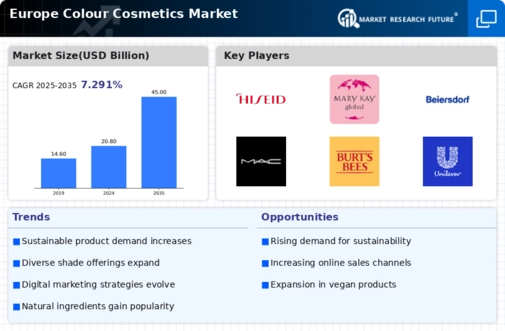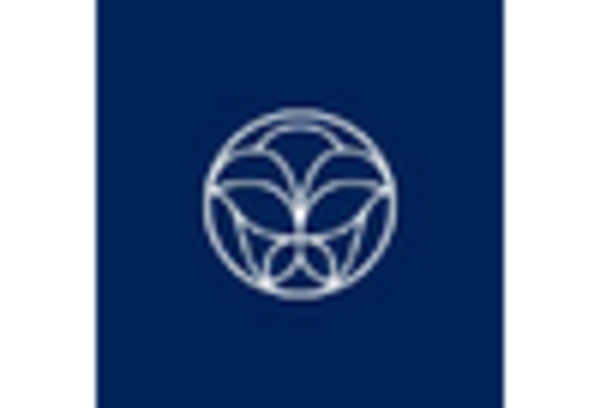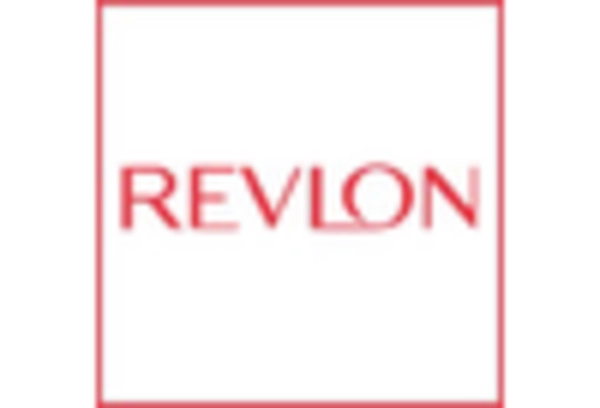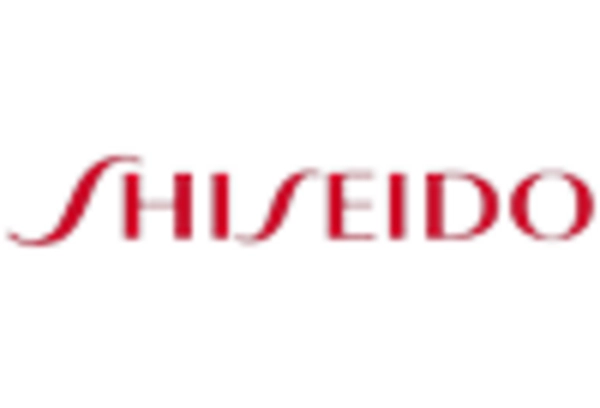Rise of E-commerce Platforms
The colour cosmetics market in Europe is experiencing a notable shift towards e-commerce platforms, which appears to be a significant driver of growth. With the increasing penetration of the internet and mobile devices, consumers are increasingly opting for online shopping. In 2025, e-commerce sales in the beauty sector are projected to account for approximately 30% of total sales in the region. This trend is further fueled by the convenience of home delivery and the ability to access a wider range of products. Additionally, the rise of social media influencers and beauty tutorials online has enhanced consumer engagement, leading to higher conversion rates. As a result, brands are investing heavily in their online presence, optimizing their websites, and utilizing targeted digital marketing strategies to capture the attention of potential buyers in the colour cosmetics market.
Influence of Social Media Trends
Social media platforms are playing a pivotal role in shaping consumer preferences within the colour cosmetics market in Europe. The rise of platforms such as Instagram and TikTok has created a new avenue for brands to engage with consumers. Influencer marketing has become a powerful tool, with beauty influencers driving trends and product popularity. In 2025, it is projected that nearly 70% of consumers will rely on social media for beauty product recommendations. This trend suggests that brands must adapt their marketing strategies to leverage social media effectively. Engaging content, tutorials, and user-generated content are becoming essential components of successful campaigns in the colour cosmetics market, as they foster community and brand loyalty.
Regulatory Changes and Compliance
The colour cosmetics market in Europe is subject to stringent regulations that govern product safety and ingredient usage. Recent changes in regulatory frameworks, such as the EU Cosmetics Regulation, are influencing how brands formulate and market their products. Compliance with these regulations is becoming increasingly critical, as non-compliance can lead to significant financial penalties and reputational damage. In 2025, it is anticipated that brands investing in compliance and safety testing will gain consumer trust and loyalty. This regulatory landscape is pushing companies to innovate and develop safer, more effective products, thereby driving growth in the colour cosmetics market. Brands that proactively address these regulations are likely to enhance their market position.
Emergence of Male Grooming Products
The colour cosmetics market in Europe is witnessing a growing trend towards male grooming products, which appears to be a significant driver of market expansion. Traditionally dominated by female consumers, the market is now seeing an increase in male consumers seeking cosmetics for personal care and grooming. In 2025, it is estimated that the male segment will account for approximately 15% of the total colour cosmetics market. This shift is indicative of changing societal norms and the acceptance of cosmetics among men. Brands are responding by developing targeted marketing strategies and product lines specifically designed for male consumers. This diversification not only broadens the consumer base but also indicates a potential for growth in the colour cosmetics market.
Growing Demand for Natural Ingredients
The increasing consumer preference for natural and organic ingredients is reshaping the colour cosmetics market in Europe. This trend is driven by heightened awareness regarding the potential harmful effects of synthetic chemicals in beauty products. In 2025, it is estimated that products labeled as 'natural' or 'organic' will represent over 25% of the total colour cosmetics market. Consumers are becoming more discerning, seeking transparency in ingredient sourcing and formulation. Brands that prioritize clean beauty and sustainable practices are likely to gain a competitive edge. This shift not only reflects changing consumer values but also indicates a broader movement towards health and wellness, which is influencing purchasing decisions in the colour cosmetics market.

















Leave a Comment